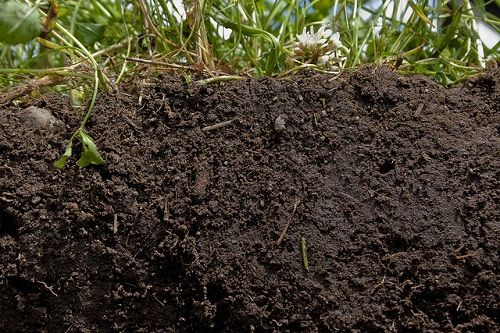The economy and infrastructure of this cosmopolitan domain are based on carbon, said Kris Nichols, the chief scientist at the Rodale Institute.
Nichols spoke about the importance of carbon on March 2 before the Philadelphia Society for Promoting Agriculture.
Plants acquire carbon from carbon dioxide in the air and feed it as sugars to microorganisms.
In return, the microorganisms provide the plants with nutrients from the soil like nitrogen and phosphorus, and they fortify the soil against extreme weather.
“We want to have fertility added to the plant when the plant says, ‘I need it,’ ” Nichols said.
This nutrient delivery can get pretty complex. Several organisms may collaborate to transfer nutrients from one plant to another, Nichols said.
Scientists have so far described only a fraction of soil microbe species.
“We’re learning about this huge level of diversity that we have in our system,” she said.
Fortunately, farmers don’t need to cater to the needs of every organisms individually. They just need to provide conditions where microbes can help them.
This could involve strategies such as growing cover crops and legumes, and adding manure and compost.
An alternative fertility strategy — delivering a bunch of synthetic fertilizer early in the season — is sort of like giving a baby at one time all the food it needs until it’s 18, Nichols said.
The plant can’t use so much at once, and many of the nutrients will be lost to evaporation or mineralization. Commercial fertilizers often deliver less than half of their nutrients to the plants, she said.
Fertilizer efficiency has been declining over the last 50 years. That means it takes more nitrogen to grow a bushel of grain today than it took in 1960, Nichols said.
Soil organism populations have declined over years of less-than-ideal management. “We outsourced the job of the microbiology,” Nichols said.
That’s a problem because microbes also improve the soil structure.
Glomalin, a chemical produced by mycorrhizal fungi, is a weatherization treatment for the soil. It protects the soil from the elements, Nichols said.
The sun tries to draw water up out of the soil, while gravity pulls water downward. The more complex the soil structure, the more difficult it is for the water to be lost in either direction.
“It’s like putting bends in a straw,” Nichols said.
In a soil with poor structure, rain water surges into the pores in the soil, pushing the air molecules together and building air pressure. “Literally that clod explodes from the inside out,” Nichols said.
As a soil microbiologist for USDA’s Agricultural Research Service earlier in her career, Nichols helped improve the soil at a North Dakota farm.
When the farm was hit with 13 inches of rain in 24 hours — essentially a year’s worth of rain for that semiarid area — the fields were more or less unscathed.
When Nichols visited the farm the day after the storm, she did not have to slog through boggy fields. Her shoes did not even get caked with mud while walking the fields.
That farm was the only one in the area that was able to harvest some grain that year. The seeds were not washed away, and the soils stored the water, Nichols said.
U.S. agriculture has cut its topsoil losses significantly in recent years, but farmers still lose almost 2 billion metric tons a year.
“We can’t sustain that loss,” Nichols said.
As the climate in the Mid-Atlantic shifts toward heavier rains broken by longer dry periods, farmers can prepare by feeding the microbes, she said.
For producing a good yield, saving on fertilizer costs, and keeping the soil in place, carbon-fueled microbes are farmers’ allies.
Philip Gruber Staff Writer

